#NatureZen: Winter Hunters
words and photos by Melissa McMasters
For our inaugural 2021 #NatureZen, we’re looking at some birds that are more noticeable in the winter than they are during the rest of the year: the birds of prey. (I suppose this will probably stretch the definition of zen for some of you!) Birds of prey pursue other animals for food, and they have hooked beaks and talons for more effective capture of their prey.
Probably our most visible bird of prey locally is the red-tailed hawk. Why does it seem like we see so many more of them in winter? Partially it’s the higher visibility created by bare trees, but it’s also because there are more in our area. Some populations of hawks live here year-round, but in winter they’re joined by a population that spends the rest of the year in Canada and the northern U.S.A.
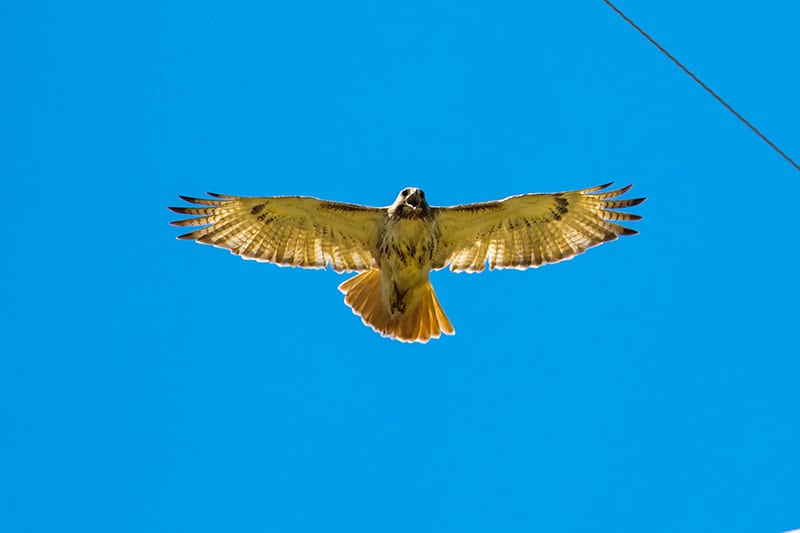
Red-tailed hawks are extremely variable in their plumage, but there are a few ID clues you can use to distinguish them. First, the hawk above has an obviously red tail, but that’s not always the case. Another field mark is that brown strip of feathers stretching from the head to the middle of the wing. Those are called patagial bars, and they’re generally present in the red-tailed hawks in our region–although you can only check this out if the bird is in flight.
So the first thing I look for is the hint of a “belly band,” a strip of dark feathers on the abdomen with a clear patch of pale feathers both above and below. You can see that in the photo above and in the one of this perched bird.
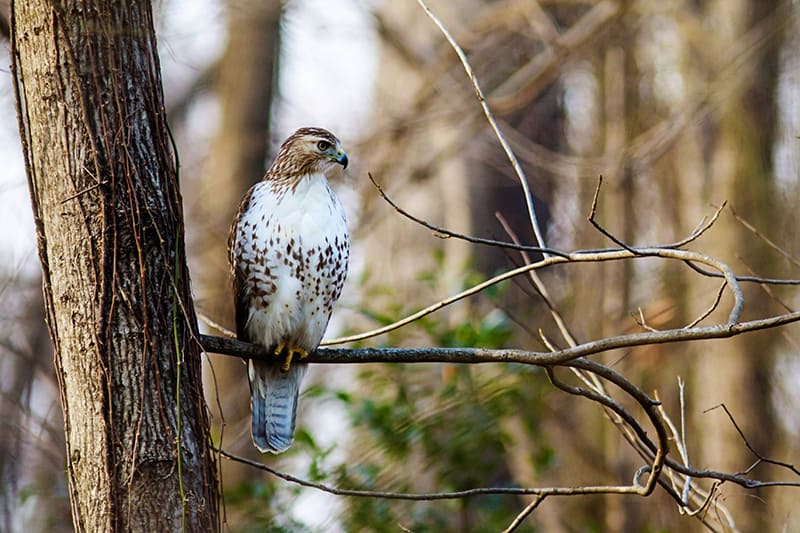
Red-tailed hawks have a similar-looking cousin, the red-shouldered hawk. These birds prefer a slightly wetter habitat, and they have more extensive markings on their chests. A juvenile red-shouldered hawk looks similar to a red-tailed hawk at first glance, but note how much more streaking there is on the chest–not a “band” but a whole shirt!
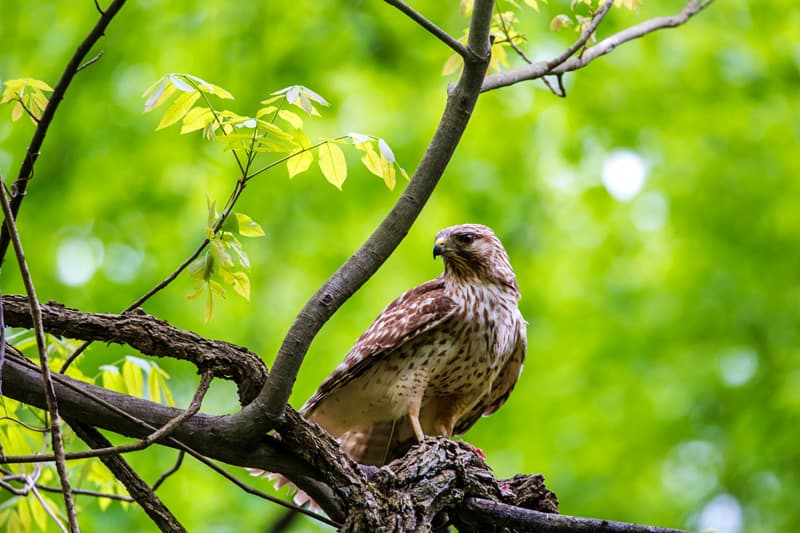
Adults, though, are easy to distinguish: their chests are warm red all over.
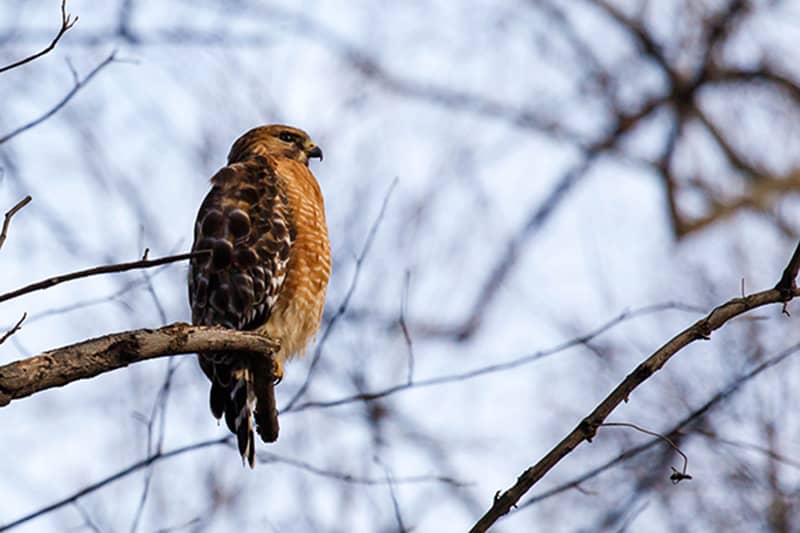
Is there a hawk in your backyard, picking birds off your feeder? That’s probably a Cooper’s hawk, which prefers to eat medium-sized birds like starlings, pigeons, and robins. (Red-tailed and red-shouldered hawks prefer mammals, so they’re probably not hunting in your yard.) Cooper’s hawks tend to be smaller than those two hawks as well, and with noticeably longer tails. (If you’re feeling guilty about turning your songbirds into a buffet, take your feeders down for a few days and the hawk will likely look elsewhere.)

Northern harriers are hawks that prefer hunting in open fields, where they glide low without making a sound. Adult males are known as “gray ghosts,” while females are browner (and in the case of immature females like the one below, sport a red wash). All harriers can be identified by the band of white feathers on their rumps (just above the feathers on the tops of their tails). Harriers also have a “facial disc,” a circular arrangement of stiff feathers around the head that helps direct the sounds of their small prey right into their ears! It’s an incredible tool that lets them hunt by both sight and sound. Notice the pale ring around this harrier’s face–perhaps that’s what has helped her find a snack.
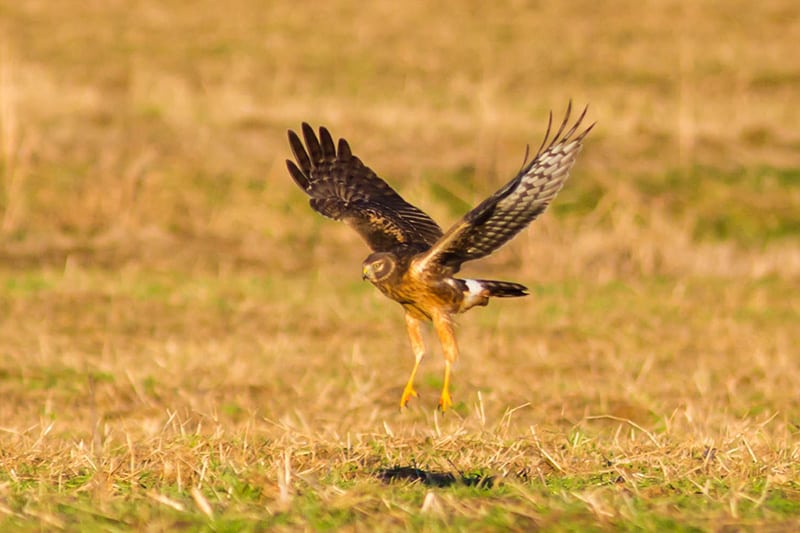
The most famous owners of facial discs are, of course, the owls. Though you may be more likely to hear their “who cooks for you?” call in the Old Forest than to actually see one, winter is a great time to encounter the barred owl. While their brown-streaked chests do blend in well with the bare limbs of the trees, the relative lack of songbird chatter makes their call ring out that much more clearly. Have you ever heard an owl conversation in the woods?
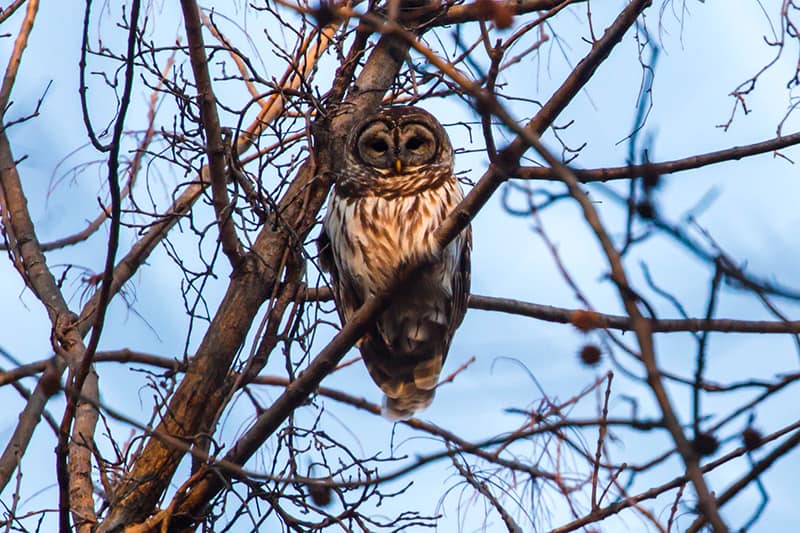
The barred owl is in our area–and in the Old Forest–year-round, but some owls are a special winter treat. The short-eared owl is a winter visitor to our part of the country, but because it prefers wide-open grasslands, we don’t see it often in the city. When a group does come visit, though, it’s a true thrill to watch them glide almost silently in and out of the grass at dusk, hunting for rodents and small birds–and occasionally clashing with the northern harriers who hunt the same territory by day. I’m told short-eared owls can be active during the day too, but in my experience, they show up only in near-impossible photographic conditions. I consider any shot of one to be a miracle!
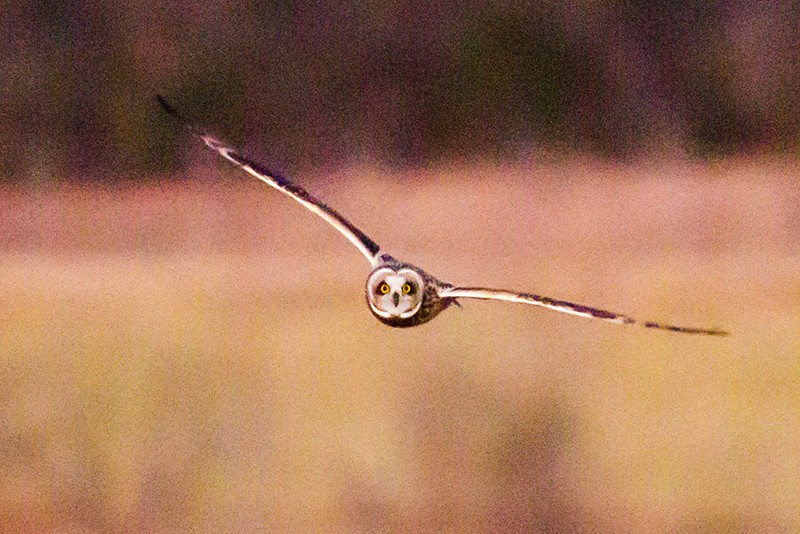
Finally, we have our tiniest local bird of prey, the American kestrel. About the size of a mourning dove, this member of the falcon family is small enough to sit comfortably on electric wires and watch for prey like insects and smaller birds. In the winter, females often fly south first and establish their preferred territory of open fields, so the lollygagging males get stuck with more wooded territories! You can tell them apart by looking at the wings: females’ are reddish-brown and males’ are slate-blue. They all have nature’s most stunning sideburns.
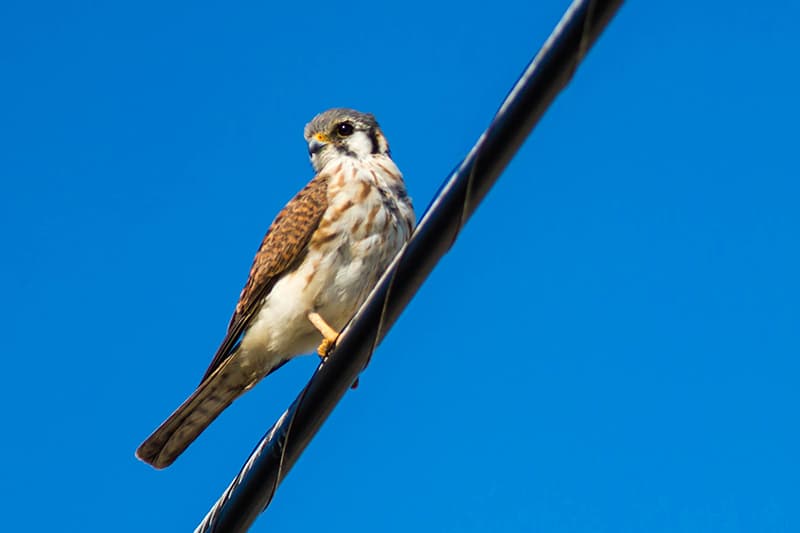
We hope you get the chance to see some of these amazing hunters this winter!



